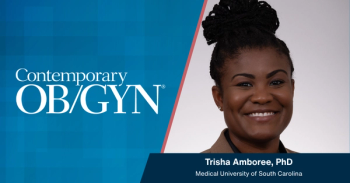
- Vol 67 No 5
- Volume 67
- Issue 5
A moral crisis: Choosing between medicine and law
This month, I will share with you an issue I have encountered lately. While I am not advocating anything, I am raising awareness.
As a resident physician, I remember how medical teams would debate whether a laboring patient with breech presentation should be given oxytocin (Pitocin) to augment labor. Because this was a time of high medicolegal concerns in obstetrics, an untoward outcome would increase the risk of lawsuits, but the pushback was that we practiced medicine, not law.
Little did I realize that this dilemma of having to choose the practice of medicine over law would be a theme throughout my medical career. The current Senate Bill (SB) 8 and SB4 laws in Texas provide further examples of this dilemma.1 Many of these types of laws are being adopted in other states, as well. Although SB8 is well known in the news as the Heartbeat Bill, banning abortions once fetal cardiac activity is present (except in the case of maternal medical emergency) and is enforced through civil lawsuits, SB4 is less well known or understood.
SB4 went into effect in December 2021 and took SB8 to a new level by regulating drug-induced abortion procedures, providers, and facilities, as well as expanding abortion complication reporting. There are 2 main points:
1. creating a criminal penalty to the physician for administering a medicine to end a pregnancy, even if the woman’s life is in danger (a state jail felony, with a punishment range of 180 days to 2 years and a $10,000 fine); and
2. expanded abortion complications requiring reporting within 3 days by anyone who treats an abortion complication and within 30 days by the health care facility.
These are enforced by civic penalties and are reported to the Texas Medical Board. These laws are intended to impact elective abortions and, unfortunately, impact daily obstetrical management.
With the passage of SB4, the only option is expectant management, unless the physician opts to risk a potential felony. When infection develops, delivery is the only option to save the mother’s life. But the physician does this with defensive posturing, hoping that if a felony is levied, the court will find in their favor. Navigating this path has required countless hours of discussion with faculty, staff, and our legal experts, as well as buy-in from the entire team to ensure both lives are respected. The situations requiring delivery in the setting of maternal life endangerment can be categorized into infection, hemorrhage, and severe hypertension.
However, over the past several weeks, this has expanded for me into a moral crisis, as women have presented in the previable period (14-22 weeks) with fetal legs, arms, or the umbilical cord in the vagina. There is no evidence of infection, bleeding, or severe hypertension. However, the chance for infection via the fetal parts connecting the organisms in the vagina to the uterus is extremely high. Waiting for a woman to get extremely sick is uncomfortable for a physician who has taken an oath to “do no harm.” If she were to die as a result of waiting, the moral crisis of why we didn’t act hangs.
A strict interpretation holds physicians from acting, and that literal interpretation (given fear of litigation or felony) is currently undecided. That is, case law has not yet determined whether this falls in or out of the current state legislation, and the current actions are being done with little guidance or enthusiasm to confront such a controversial topic.
The unintended consequences of these laws are likely unanticipated, but the moral angst they have wrought hangs over us.
Reference:
1. R. Todd Ivey MD. Texas Senate Bill 8 (SB 8): NOT just another anti-abortion bill. Contemporary OB/GYN. 2021;66(10). Accessed April 7, 2022. https://www.contemporaryobgyn.net/view/texas-senate-bill-8-sb-8-not-just-another-antiabortion-bill
Articles in this issue
over 3 years ago
Deep dive into hypertensive disorders in pregnancyover 3 years ago
Recognizing the gapNewsletter
Get the latest clinical updates, case studies, and expert commentary in obstetric and gynecologic care. Sign up now to stay informed.




















